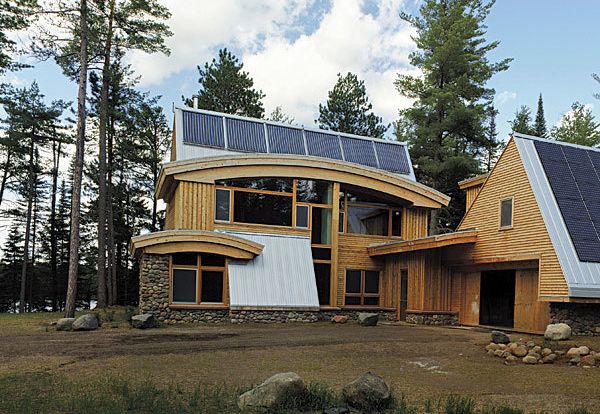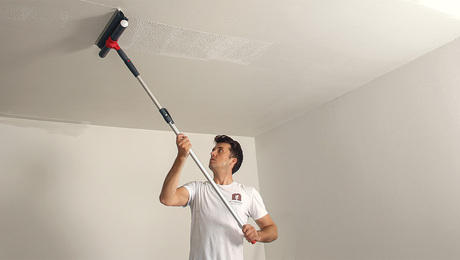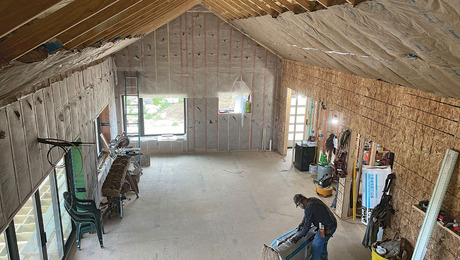The Passive House: Green Without Gizmos
“Use less energy” is the mantra of a stringent German building standard that’s catching on.

Synopsis: The Passive House standard, developed in Germany in 1996, has three simple requirements that can result in a house that uses precious little energy. The requirements, which focus on air infiltration, Btu consumption, and energy usage, surpass building-code and Energy Star requirements. Houses built to the standard have become popular in Europe and are starting to catch on in the United States. Because Passive Houses are tightly air-sealed, mechanical ventilation is necessary. Passive Houses aren’t necessarily net-zero houses; creating energy isn’t part of the guidelines. However, many Passive Houses are close to net-zero because they use so little energy.
Passive House is a performance-based building standard that can result in a house that consumes as little as 10% of the total heating and cooling energy used by a house built to the 2006 building code. If you’re an architect or builder, imagine the reaction you’ll get from clients when you tell them that you can either build a house that uses energy by the dollar or one that uses it by the dime.
To achieve their impressively low levels of energy consumption, certified Passive Houses rely on proper solar orientation, an airtight envelope, lots of insulation, mechanical ventilation, and the reuse of heat.
Designing and building a Passive House requires using proprietary energy-load software aimed at keeping energy use low and includes construction that can be painstaking. A flubbed detail can mean the difference between reaching the standard or not.
Lower lifetime energy use
The Passive House standard was developed in Germany (where it’s known as “Passivhaus”) in 1996 by physicist Wolfgang Feist, who was inspired by and fully acknowledges the influence of the groundbreaking, superinsulated houses built in the United States and Canada in the 1970s. In this country, Feist’s work has been championed by German-born architect Katrin Klingenberg, who started the Passive House Institute US, also known as PHIUS (www.passivehouse.us) in Urbana, Ill.
Upwards of 20,000 Passive Houses have been built in Europe, and while there are fewer than two dozen in this country, there are many on the drawing board, and the movement has gained converts quickly as energy prices have increased.
Armed with the mantra “First, use less energy,” Passive House advocates say that rather than getting hung up on the amount of energy it takes to build a home, it is more important to look at how much energy the home will use during its lifetime. Statistics differ, but on average, a typical code-built house will use 10 times more energy to heat, cool, and operate its various systems for 40 years than the amount used to build it.
To get an idea of how little energy a Passive House uses, it helps to look at the Home Energy Rating System (HERS) index, a software-generated number that predicts a house’s energy based on its design.
Houses built to the 2006 International Energy Conservation Code (IECC) score a 100 on the HERS index. Energy Star and LEED homes can’t surpass 80 or 85, depending on their climate zone. Net-zero homes score the lowest, at 0. A Passive House scores between 20 and 30 on the HERS index.
While a net-zero house may use less total energy than a Passive House, it achieves that score by adding energy made with alternative-energy sources into the calculations. The Passive House standard disallows site-generated alternative-energy sources in its computations and relies instead solely on its low energy consumption. As Klingenberg notes, “A Passive House can become a net-zero house with the addition of a very small renewable-energy system.” The standard doesn’t change from one location to another, but the way a house is built does.
For more photos, drawings, and details, click the View PDF button below:






















